A decade ago, we claimed that the comebacks staged by Doug Henry, Jeff Emig, Christophe Pourcel, Ben Townley, and Cameron Sinclair were the most inspiring career resurrections the sport had ever seen (the piece was first published in Transmoto’s print magazine in 2010, Issue #4). But over the past decade, who do you think has earned a place on this gritty list of the sport’s ‘Greatest Comebacks’, and why? Toby Price? Chad Reed? Ken Roczen? Josh Hill? Cole Seely? Or someone else entirely?
The most inspiring career resurrections the sport has ever seen.
Elite-level sporting success will always attract attention. But when a sportsman succeeds in their field after career-threatening injury or circumstance, it attracts something more: admiration and public fascination. Sporting comebacks are a bit like rising from the dead – they come with biblical overtones, and they’ve spawned classic clichés such as “overcoming adversity”, “in the face of overwhelming odds”, and even “like a phoenix rising from the ashes”.
Yep, everybody loves a sporting comeback. They’re feel-good fantasy meets sweaty fairytale, and they speak volumes about a sportsman’s courage, commitment, and conviction.
So what are the most compelling comebacks in our sport’s history? Who has managed to resurrect their career when all seemed lost?
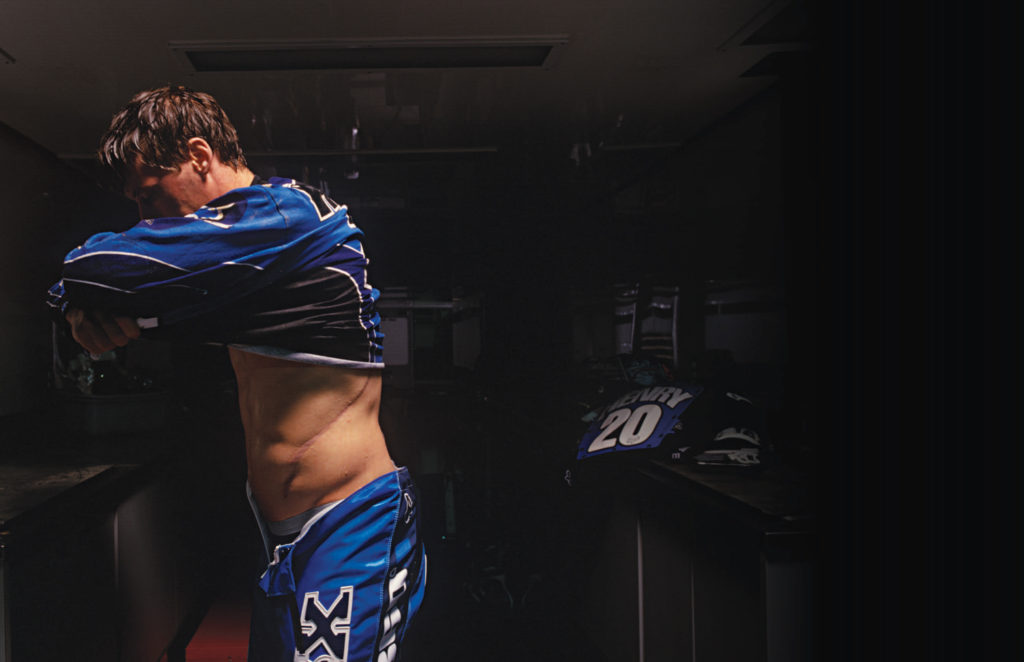
DOUG HENRY
Of all the riders to suffer a spinal injury, Doug Henry was all but their de facto spokesperson, with Fox’s memorable “What’s stopping you?” advertisement reinforcing the American rider’s incredibly gutsy return from an astonishing injury.
The kid from Connecticut won three AMA Motocross Championships in the 1990s, famously edging out future Hall of Famers Jeff Emig and Jeremy McGrath in 1993. Then in 1995, after moving to the 250cc class and finishing fifth in the AMA Supercross series, Henry was poised to be one of the top contenders for the Outdoor title … until his infamous crash at Budds Creek, Maryland. While dueling with McGrath, Henry’s throttle stuck on and he over-jumped the famous track’s downhill drop-off, landing way on the flats and shattering his spine. The crash, and the graphic video thereof, inevitably became one of the most famous in motocross history.
Doctors told Henry he’d never race again. But his wife, Stacey, refused to accept the diagnosis and sought a second opinion. They finally found surgeons in Washington, DC, who claimed they could fuse his back and enable him to race again.
After a year away from the sport and countless hours of rehab, Henry made a triumphant return, endearing himself to a legion of fans. His speed slowly crept back and in 1997 he won three rounds of the AMA Supercoss Series – the final of which was at Las Vegas, where Henry famously debuted the prototype of Yamaha’s YZ400F, a white machine that blew a lot of blue smoke that night but hooked up on the rock-hard Nevada dirt. It was the first time a four-stroke ever won an AMA Supercross event.
When Yamaha then asked Henry to ride the thumper full-time in 1998, Henry wasn’t all that down with the idea. “I had worked so hard to make the comeback after breaking my back,” says Henry, reflecting on the time, “and now I was being asked to ride an unproven motorcycle. I felt like I was starting all over again.”
But he rolled with Yami’s request, worked hard on developing the bike and won five AMA nationals en route to the 1998 AMA MX title. He was the first rider in AMA history to win a national championship on a four-stroke and was named AMA Athlete of the Year in 1998. Henry won one last national in 1999 during his retirement tour season, before focusing his energies on his family and his other hobbies, mountain biking and snowmobiles.
In 2003, in a second chapter of his racing career, he took up supermoto, finishing second in the 2003 AMA Supermoto Championship race in Las
Vegas and winning the X Games in 2005. Sadly, he re-injured his spine in a crash in March of 2007, and continues to demonstrate the courage and grace with which he approached his rehabilitation the first time around, a decade earlier.
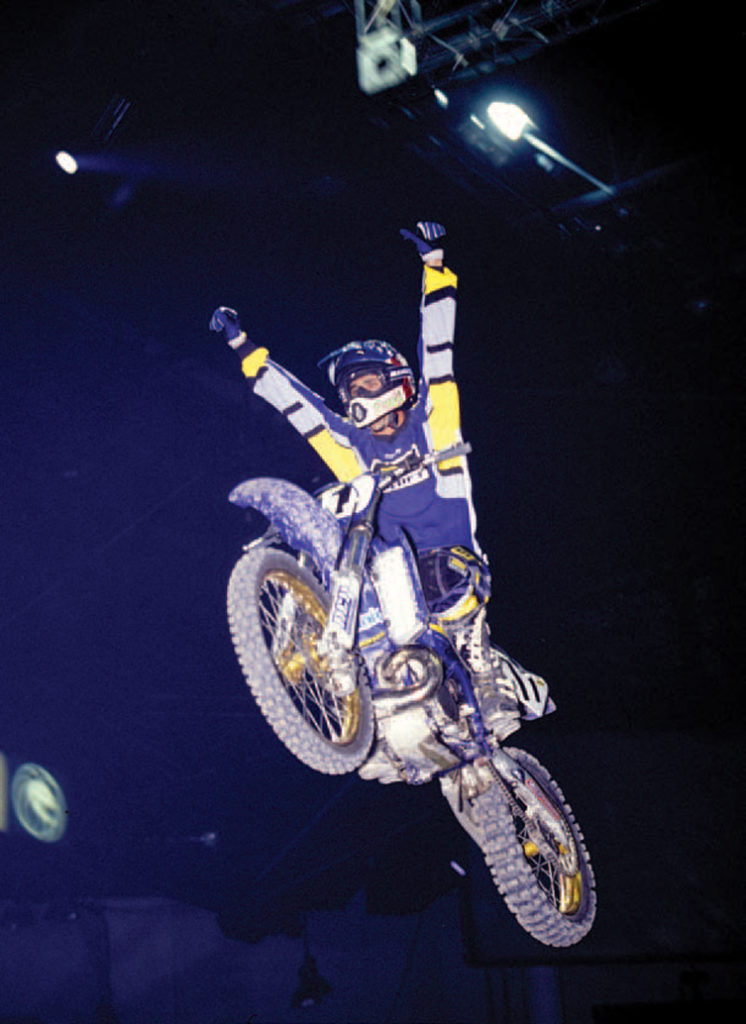
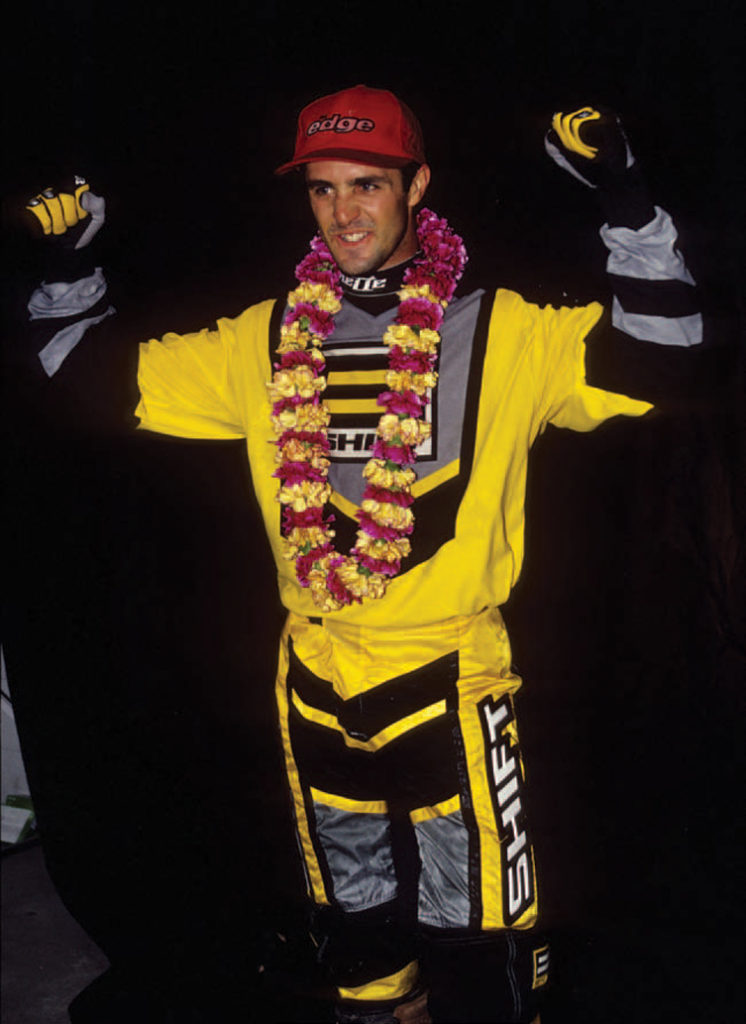
JEFF EMIG
In 1990, Cam Jeffrey Emig became a factory Kawasaki rider alongside the likes of Jeff Ward, Johnny O’Mara and Jeff Matiasevich, and went on to be one of the sport’s greats. During an 11-year Pro career, Jeff Emig claimed 37 AMA National wins, four AMA national titles, an FIM World Supercross title and was a six-time member of the US MXoN team. He helped mould the SoCal MX lifestyle that came to prominence in the 1990s and generated a rabid following of fanatical supporters. Affectionately known as “Fro”, the enigmatic Jeff Emig really rocketed to prominence in 1996 when he prevented career-long rival Jeremy McGrath from completing the perfect season, and then won the 250cc Outdoor championship. Then in 1997, Emig’s career was launched into the stratosphere: he won his first AMA 250cc SX title, and easily defended his 250cc Motocross crown. But injury lay in wait, and a pain-riddled 1998 saw him sidelined for much of the season. In spite of his successes – or, as many believe, because of it – Emig embarked on a bender that just didn’t stop.
Sure, it might have been played up by the conservative, folksy, right-wing American corporates, but the fact remains: Emig was lost to drugs and a lifestyle that would render him unable to last a lap on the bike, let alone win a race or series. He lost his contract with Kawasaki and was made an industry pariah.
But Emig slowly regained respect. He took full responsibility for his actions, blaming only himself for losing his factory ride. And he made a triumphant return to racing by winning the US Open of Supercross in October, 1999, and taking the $100,000 prize money.
Sure, Emig’s comeback was not from a life- or career-threatening injury, but from a period in his life he went so far off the rails, he couldn’t even hear the train. Few had any hope he’d ever appear on an AMA start gate again, let alone return to the top of his game. And ironically, the spinal injury that did end his career actually came after his 1999 comeback – in 2000, when preparing for comeback to full-time AMA competition.
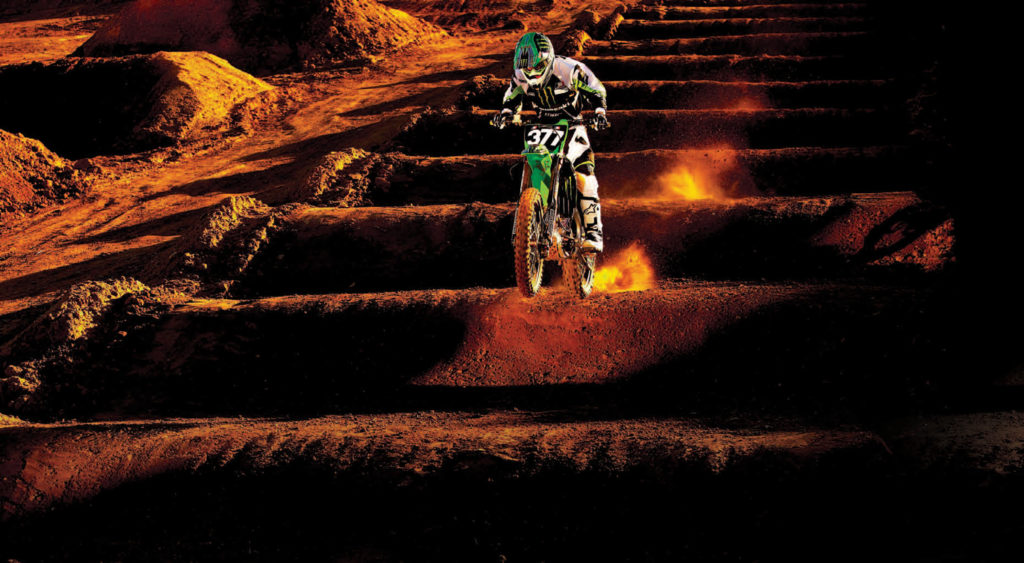
CHRISTOPHE POURCEL
After winning the 2006 World Motocross MX2 Championship, Frenchman Christophe Pourcel was on a meteoric rise. But during his 2007 title defense, a crash in Northern Ireland left him with a fractured back, complications with his pelvis and a whopping 70% chance of paralysis. Few expected him to race again, let alone claw his way back to the highest level.
But, driven to fulfill a lifelong dream to race in the US, Pourcel took a year off and underwent multiple surgeries. He trained his arse off, finally landed a ride with the powerhouse Monster Pro Circuit Kawasaki team for 2009 and, with a style reminiscent of countryman Jean-Michel Bayle, made an immediate impact in America. He claimed the ongoing pain from his injuries forced a change to his riding style, demanding he choose smoother, more flowing lines. And it obviously worked. At the age of 21, Pourcel barnstormed the 2009 AMA Eastern Region Supercross Lites title, and then staged an epic season-long battle with Ryan Dungey in the Outdoors, with a mechanical failure late in the season costing him the points lead and No.1 plate.
He successfully defended his SX crown in 2010 but, after holding the red plate in the Outdoors for the entire season, an uncharacteristic crash and dislocated shoulder saw him DNF the final two motos of the season. It relegated him to third in the standings. Pourcel took the disappointment in his stride and was philosophical about the turn of events. After all, this bloke has faced greater hardships in his life.
For 2011, he’s destined for the 450cc class, which is likely to suit his smooth and graceful style. Chances are he’ll lock horns with Dungey again, too
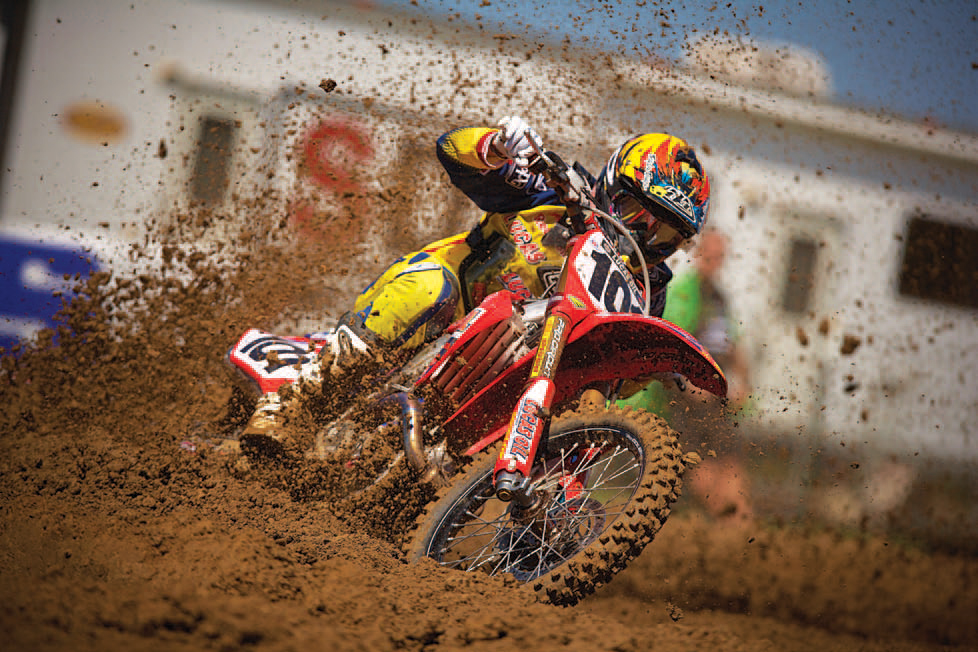
BEN TOWNLEY
After a gruelling apprenticeship in Europe, the young Kiwi smashed all-comers in the 2004 World MX2 Championship. He stepped up to the premier MX1 class the following year but, hampered by a wrist operation gone wrong, he could only manage a third in the championship. Still, not bad, considering it was Stefan Everts and Mickael Pichon who bettered him. And at the 2005 MXoN in France, where Townley almost beat Ricky Carmichael, the world sat up and took notice of kid from Taupo, New Zealand.
Having just signed Townley, Pro Circuit Kawasaki’s Mitch Payton was rubbing his hands together, but many thought BT had taken a backwards step, asking why the heir apparent to Everts would go from Europe to the USA and step down to a 250cc machine. But the young Kiwi had plans. He took up residence with Ricky Carmichael in Florida and hired RC’s renowned trainer, Aldon Baker.
A torn ACL sidelined the New Zealander for the majority of the 2006 season in America, but he won the 2007 East Region SX Lites crown and finished a narrow second in the 250cc AMA MX series after staging an epic season-long battle with teammate Ryan Villopoto.
Townley was hot property and earned a 450cc seat with Team Honda in 2008 – arguably the plumb ride in the motocross world at that time. But when he injured his shoulder in the lead-up to the 2007 MXoN, BT’s story took a turn down a dark street.
His shoulder was much worst than originally anticipated, and it forced mistakes while riding, including a badly broken heel early in 2008. Townley opted for major surgery and waved the ’08 season goodbye. Frustrated by his injuries and feeling increasingly awkward that he hadn’t delivered in the 450 class, BT went to his sponsors in January, 2009, and told them to keep their paychecks. He returned to New Zealand to recuperate, both physically and mentally, got married and started a family. And he finally had his troublesome shoulder diagnosed and properly fixed.
Then, after signing a deal with the Troy Lee Honda outfit for the 2010 Outdoor season, BT was dealt another cruel blow. Practicing in NZ, a gearbox problem threw him into the bars … hard! It damaged to his internal organs and required emergency surgery that required his gizzards to laid out on the table next to him and cleansed!
Yet, within just a couple of months, he retuned to the States for the opening round of the AMA Outdoor Championship and, though lacking fitness and having been off the bike for he best part of two full seasons – and knowing first-hand what his intestines look like – Townley battled the frontrunners in the most competitive MX series on Earth. Within another month, as his health returned, he beat Europe’s best at the US round of the World MX Championship at Glen Helen, and then went onto to post several podium finishes to see the AMA season out.
For 2011, Townley has some offers on the table from both Europe and America. You get the feeling that, having survived the past few horror seasons, BT101 is set to do something special.
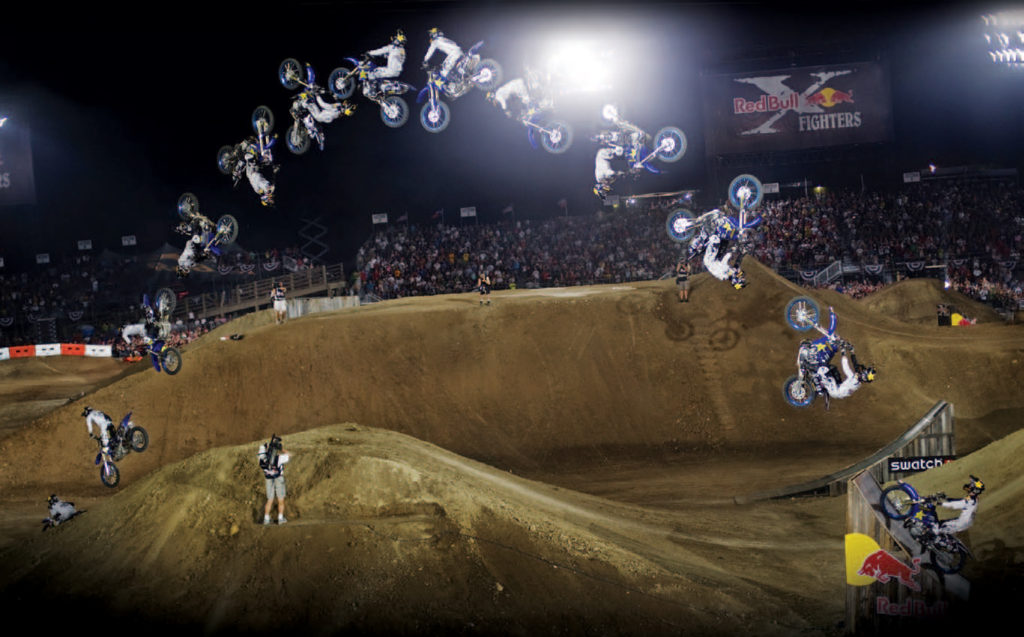
CAMERON SINCLAIR
Ever contemplated a Backflip on your dirt bike? How about two of the things in the one flight of fancy? There’s a very good reason why no one went near the Double Backflip for two years after Travis Pastrana attempted one at the 2007 X Games: it’s complete insanity.
But at a local freestyle event in Spain in December, 2008, Australia’s Cameron Sinclair had a rush of blood and gave it a crack. He ain’t a big bloke, but Cam Sinclair has got goolies the size of coconuts. After going on to successfully land a heap of the things, Sincs almost started to make Double Flips look routine.
But then it all went horribly wrong at the Spanish round of the Red Bull X-Fighters in July, 2009, when he under-rotated and had a sickening crash, which left him in a coma with a lacerated liver and multiple broken bones. Against all the doctor’s predictions, he finally emerged from the coma and began what was expected to be a very long and torturous road to recovery. Sincs underwent intense physiotherapy and had to learn how to speak and walk all over again. And six months after the accident, he was still experiencing numbness, lethargic movement down one side of his body, and memory loss on a daily basis.
Undeterred, but surely facing a cavalcade of demons, he got back on his YZ and started riding – and flipping – again. And at the Crusty show in Darwin in April, 2010, he landed his first Double Backflip since the accident. It was just 282 days after his crash in Madrid, and the relief in his body language was palpable.
But Sincs wasn’t done. He successfully landed his signature trick in the Crusty and Nitro Circus Live shows, and then won the adulation of Spanish fans when he returned to Madrid and stuck the Double. Two weeks later, he earned a gold Medal for Best Trick at X Games 16. For a bloke to stage that sort of turnaround in the space of just 12 months is nothing short of miraculous!
HONOURABLE MENTIONS
Darryll King: Toward the end of a long and illustrious MX GP career in Europe, “DK” broke his neck and was forced to wear a halo for six months. He retuned to the Southern Hemisphere, signed up with CDR Yamaha and went onto claim an amazing three premier-class titles in both the Australian MX Nats and the Thumper Nats series between 2001 and 2007, and a bunch of titles in New Zealand over the same period.
Brett Metcalfe: They say you can’t teach a slow guy how to go fast, but you can teach a fast guy to stop crashing. Brett Metcalfe falls squarely in the latter group, and his early years in both Europe and America was riddled with injury. He got golden staph after a particularly bad knee reconstruction in 2003 and it nearly ended his career. Now, seven years down the track, he’s posted podium finishes in the AMA Lites MX and SX series, and has just run second to Ryan Dungey in the AMA MX in his rookie years on the 450. Surely Metty has now established himself as Australia’s second most successful MX export ever.
Josh Coppins: After an MX GP career that began in 1995, the Kiwi finished second to Mickael Pichon in the 2002 World 250cc MX Championship, and decided to take himself to America early in 2003 – where he broke both legs and his back in a practice crash. He fought his way back to the front of the pack in Europe and was the only rider to challenge, and beat, Stefan Everts for many years. And in 2007, after five GP wins and nine podiums, the MX1 title that looked a formality was cruelly ripped from his grasp by a freak mechanical.
Anders Eriksson: Toward the end of his career the seven-time world enduro champ had a horrific head-on with then teammate Mika Saarenkoski and smashed himself up so badly that doctors said he was unlikely to ever ride again. He never won a title after the accident, but he ran at the front of the EWC field, and he amazed everyone to even get back on the bike.
Stefan Everts: In 2001, the Belgian great signed with Husqvarna. He broke his femur badly and buggered his knee and elbow in nasty, back-to-back practice crashes, and many thought it spelled the end of his career. The Rinaldi Yamaha team then signed the bloke and set him on the path to a record-breaking 10 world MX titles and more than 100 GP wins.
Roger DeCoster: After a frightful crash with Hurricane Bob Hannah in 1978, The Man lost his spleen and almost died (in fact, some newspapers reported that he had died). He then came back win in Luxembourg in 1980.
Travis Pastrana: People forget that, at age 13, he cased a massive X Games jump and separated his spine from his pelvis. After some time in a wheelchair, Pastrana went on to represent his country at the MXoN and become the greatest action sports star of our time.

